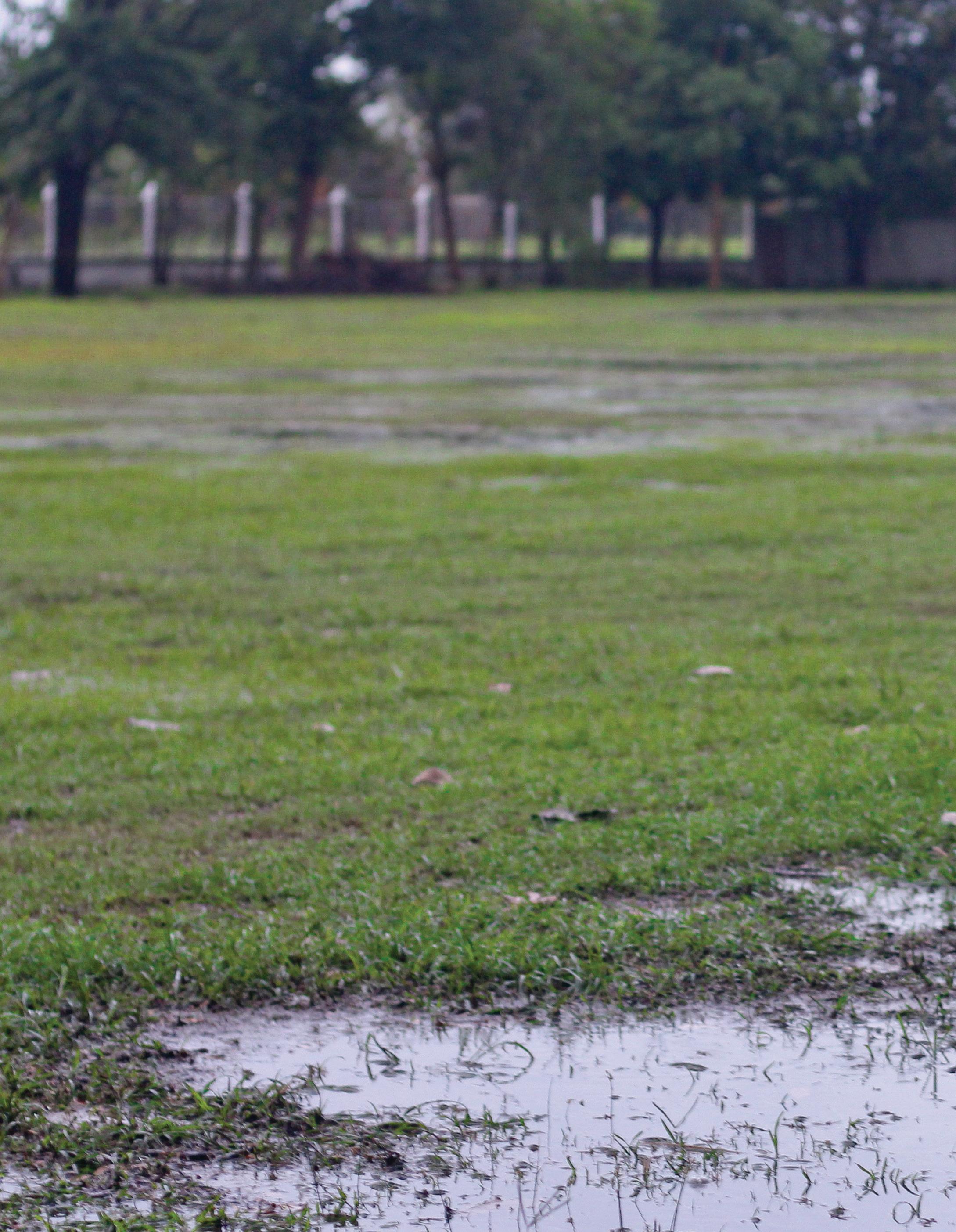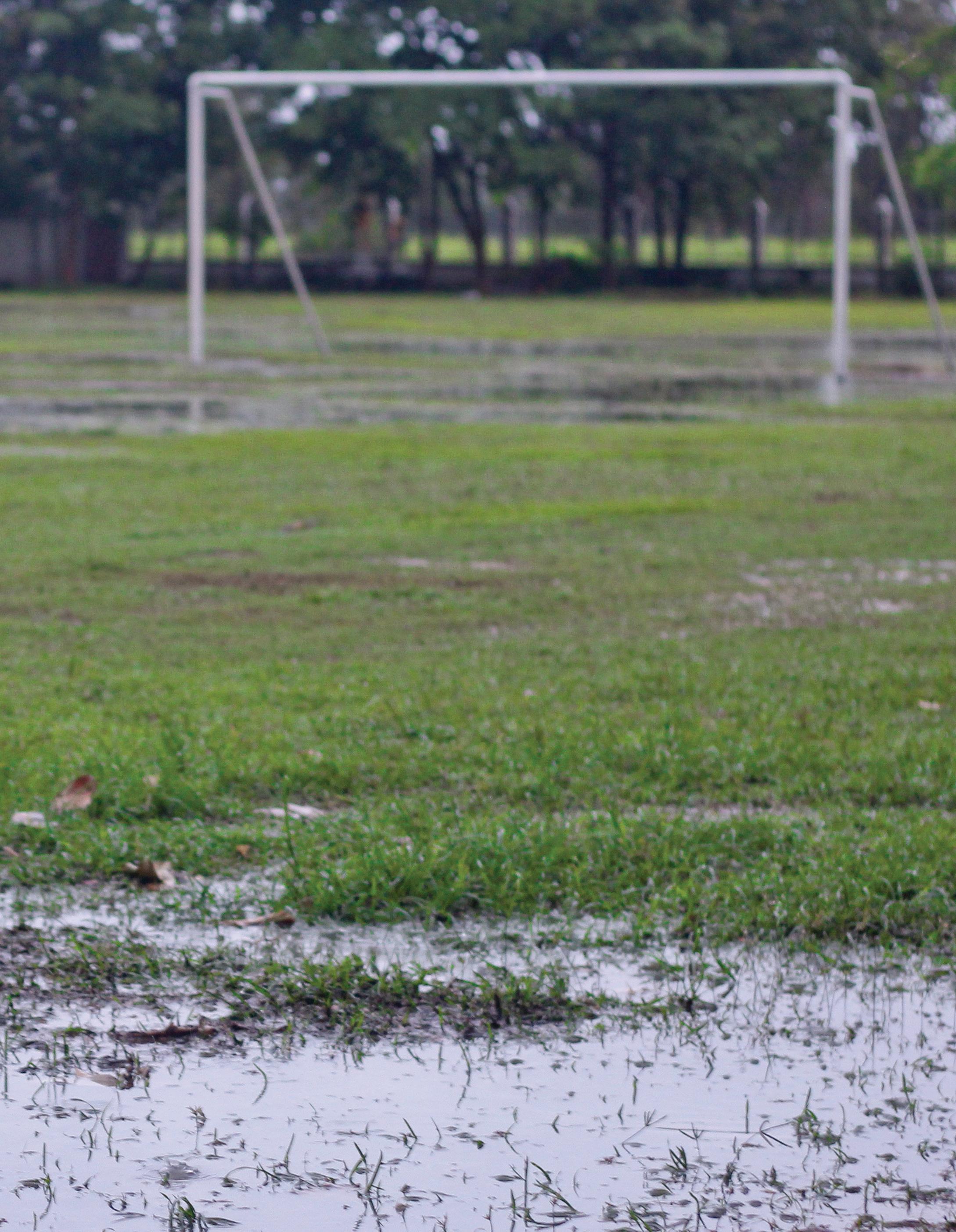
7 minute read
Sustainability
GOING
Sustainability is on everyone’s lips. But how can the sport and physical activity sector – which relies on facilities that are often energy and resource “hungry” – do its bit?
Advertisement
Over the past two decades, climate change and environmental sustainability have become salient topics for debate among government leaders and corporations on a global scale. It is no longer something only discussed in pockets – among academics, scientists or people with a specific interest in the environment – but by everyone.
The changing climate is also changing the way we live our lives. Extreme weather, forest fires, water shortages and rising sea levels are among the very real threats now faced by millions of people around the world – all attributed to the warming of the planet. Even in areas which have so far escaped existential environmental threats, the changes have affected everything from transport and energy to housing and diets – and sport.
Sustainable sport
The search for alternative, more environmentally sustainable ways of doing things has now reached every sector – including sports and physical activity. Therefore, as we enter a crucial period in time, in which we must do everything to cut down our carbon footprints – in order to curb rising temperatures – sustainability should play an increasingly important role in the design and management of sports, recreation and leisure facilities.
Climate change, and the risks of extreme weather that it brings, are already understood and the impact on communitybased sport is very real. The need to raise awareness, find solutions and build resilience is an ever more pressing matter.
As part of its sustainability guidance to the sector, Sport England states that while responding to climate change is not an easy task, there’s “no choice” not to address it.
“The sport and physical activity sector is a force for good and has a major contribution to make,” Sport England says. “We know sport and physical activity is essential to physical and mental wellbeing, and part of encouraging and enabling physical activity is about making positive choices – choosing to get around without using polluting vehicles, making neighbourhoods more easily negotiated on foot or by bike and connecting neighbourhoods to where we need to get to and from.
“Sports organisations should continue to lead by example, take a critical look at how we operate, quantify and record consumption and waste, and set challenging targets to reduce or eliminate it.
“Everyone understands there’s much more to be done, from the management of major events, sustainable travel policies and selection and use of recyclable materials, to the creation and operation of less energy and resourcehungry sports and play facilities.”
GOING GREEN
Creating environmentally sustainable facilities will become increasingly important for the sector


It’s important to consider the practical measures helping to make sports facilities more comfortable, make more efficient use of energy and other resources and help change attitudes and behaviours. Sport England has highlighted this very issue with its own guidance and produced a sustainability check list to help both designers and operators of sports facilities.
“Environmental sustainability involves a wide range of issues and is best considered in a holistic and joined-up way from the outset of a project,” Sport England says.
“It's important to consider the whole picture. Sometimes there's resistance to implementing sustainable building designs, because they're initially considered because they're initially considered more expensive and sustainable design is often the first casualty when savings are made.
“Any decisions should be made on the basis of an analysis of the total cost over the life of the project and taking into account not just the initial purchase and installation but also the running and maintenance costs.
“It's important to weigh up the pros and cons and long term implications of the use of new and different technologies, in order to decide what may be most suitable in a particular situation.”
As part of its checklist document, Sport England presents a diagram which indicates a possible framework for developing a
robust strategy for any facility. It is based on a practical and cost-effective approach to achieving environmental sustainability and reducing carbon emissions – from establishing a sustainability strategy early on to reducing consumption and using renewable energy technologies (see bottom of this page).
Holistic approach

Sustainability is a very broad subject, which presents both an opportunity and a challenge. While the task of ensuring a facility is environmentally friendly can feel overwhelming at times, the level of choice available means that “every little helps”. And let’s face it, promoting sustainability can help drive down running costs and make a real contribution not just in the battle against climate change, but also in making a facility economically sustainable.
There is help available too. Sport England provides a comprehensive resource, offering information and guidance on a wide range of issues – from advice on sustainable design practices to dealing with environmental issues caused by climate change, such as floods and droughts.
Environmental sustainability is also at the heart of the work of the Sport and Play Construction Association (SAPCA). Last year, the association set up its Environmental Sustainability Working Group, whose main task is to help provide enhanced guidance on the various environmental sustainability issues impacting the sports industry. Perhaps

WHAT IS SECC?
The Sport Environment and Climate Coalition was founded in March 2022. The eight co-founding members of the alliance are:
● Sport and Recreation Alliance ● ukactive ● The Association for Public
Service Excellence (APSE) ● The British Association for
Sustainable Sport (BASIS) ● Sport England ● sportscotland ● Sport Wales ● UK Sport
most significantly, earlier this year a number of industry organisations got together to form the Sport Environment and Climate Coalition (SECC). The new body will support the sector to decarbonise by setting up an ambitious roadmap on how a transformation to net-zero can be achieved across the industry, in parallel with SECC support and guidance. The alliance will also generate and promote a campaign that shines a spotlight on the threat of climate change and the importance of environmental sustainability.
See Leigh Thomson from the Sport and Recreation Alliance (SRA), one of the founding organisations of SECC, explain the alliance and its aims (right, p. 23).
© SHUTTERSTOCK/TOMOCZ
Sport England’s diagram for developing a robust sustainability strategy for any sports facility

Sports have already experienced the effects of climate change through extreme weather

Sport Environment and Climate Coalition
Sport and recreation and the environment are intrinsically linked. Our natural and built environment provides the places and spaces for people to play sport and be active. And being active has hugely positive benefits for our environment and the wider community in which we live, through reducing emissions and improving health and wellbeing.
But climate change and wider environmental impacts are a threat both to our way of life and our sector. The evidence is now clear that there is a narrowing window within which to reduce greenhouse gas emissions and avoid dangerous and irreversible changes to our climate.
In response, the UK Government has legislated to achieve net zero by 2050 supported by carbon budgets which establish a downward trajectory for emissions in the intervening years. Through this process, the UK is committed to cutting emissions by 78% by 2035 relative to 1990 levels. Achieving these reductions in the coming decade will require every sector across the economy to play its full part in decarbonising and contributing to the wider effort to transition to net zero.
So what is the sport, recreation and physical activity sector doing to reduce its own environmental impact and make a positive contribution to the climate agenda?
A key step has been to recognise that environmental sustainability and climate change is a challenge we all face and one which requires a collective, joined up response.
Against this background, the Sport Environment and Climate Coalition (SECC) has been formed to bring together key funders and representative organisations from across the sport, recreation and physical activity sector including Active Partnerships, the Association for Public Service Excellence (APSE), the British Association for Sustainable Sport (BASIS), Sport and Recreation Alliance, Sport England, sportscotland, Sport Wales, ukactive and UK Sport.
A central role of the SECC is to provide strategic leadership and coordination for the whole sector on environmental sustainability. We are committed to working collaboratively together to ensure that, as a sector, we not only reduce our own environmental impact and contribute to the UK’s wider net zero ambitions but also maximise the power and reach of sport to make a positive contribution to the climate agenda. There is much work to be done but as a collective we are up for the challenge.












